Motor Sport
Australia’s Best Racing Circuits, and a Bit of Porsche News at the End.
Australia is a racing car enthusiast’s haven. When professional car racing first began in Australia, it lacked the local presence of manufacturers from brands like Ferrari and Mercedes – both of which helped establish a strong racing tradition in Europe. Despite Europe’s success, Australia was able to build racetracks down under that Australians and people around the world enjoyed visiting to watch – and even today they deliver some of the very best motor racing has to offer.
5 of the most famous racetracks in Australia would have to be:
- Phillip Island

You can find the Phillip Island Circuit situated about 2 hours outside of Melbourne City. Its racing heritage harks back to the 1920s. The current racetrack has been in use since 1956, although it has undergone minor changes during its life. Phillip Island is a wonderfully free-flowing circuit with a stunning backdrop of Port Phillip Bay. This famous track is loved by both motorcycle racers as well as those from the car racing fraternity. Phillip Island is currently a permanent yearly fixture for the MotoGP calendar.
Loads of motorbikes are included in the race circuit’s fastest lap times, with a Yamaha YZR–M1 ridden by Maverick Viñales in 2019 claiming the quickest lap time of 1 min:28 sec.49. You have to look down to 57th place before finding the quickest lap time accomplished by a car. 57th place was run in 1 min:38 sec.02 in a Porsche 918 Spyder driven by Matthias Hoffsummer. A 2020 BMW M3 ran around Phillips Island in 1 min: 45 sec.03 – a car that may be a little more recognisable and common to the masses.
- The Adelaide Street Circuit

The Adelaide Street Circuit hosted the Australian F1 Grand Prix in the 90s. This famous track saw racing icons Alain Prost, Aryton Senna, and Michael Schumacher score podiums on their journey to winning their F1 World Driver’s Championship. Because it was regularly the last race of the F1 season, the Adelaide Street Circuit track often had high stakes drama, with its competitors looking to win the last points of the season on what is a fast and flowing circuit. This drama added to the buzz in the air, playing host to a great party atmosphere once the final race was completed.
Although Melbourne has more recently created another famous racetrack – Albert Park – the Adelaide Street Circuit is still special. Although F1 cars no longer rip around this circuit, the V8 Supercars event has become one of the its best series.
The fastest time (1 min: 15 sec.381) ever recorded on the Adelaide Street Circuit was performed by Damon Hill back in 1993, while driving his Williams FW15C Renault Formula One.
- Albert Park

As mentioned above, Albert Park is in the seaside suburb of St Kilda, just outside the Melbourne CBD. Albert Park Circuit has played host to the Australian Grand Prix since 1996 and is a track that provides fantastic motor racing. Albert Park is also a track that anyone can tackle a lap of the circuit in their own car. It’s possible to drive around the circuit many times on any day of the week.
A Formula One Car called the Ferrari F1–75 driven by Charles Leclerc this year (2022) set a time of 1 min:20 sec.260, which is the fastest time ever set on the track. To give you an idea just how quick that is – Craig Baird drove his Mercedes AMG GT3 car around in 1 min: 54 sec.7311. Craig Baird’s record time in the GT3 Class is 8th quickest for a car more recognizable with cars can be driven on our roads legally.
- Sandown Raceway

Sandown Raceway is a track that, along with Phillip Island and Albert Park, enhances Victoria’s claim to possessing Australia’s greatest collection of famous racetracks. Until Albert Park arrived on the scene, Sandown was regarded by many as Victoria’s premier circuit. Sandown Raceway is where brilliant Aussie racers like Jack Brabham, Alan Jones, and other heroes have shown off their skills to a home audience. Sandown Raceway circuit still finds regular use today, most notably among drag racing enthusiasts.
- Bathurst/Mount Panorama

Formula One and MotoGP tracks inside Australia are rightfully famous. Events in these high-end categories are truly global, and even our home-grown Aussie drivers have made a name for themselves racing in these very events. But Mount Panorama/Bathurst is perhaps the most famous track of all to most Australians.
The New South Wales circuit plays a yearly host to the V8 Supercar race, and it has been a place where legendary battles between Ford and Holden have been played out before loyal fans. Mount Panorama is also where brilliant racers like Peter Brock and Craig Lowndes have cemented their status as giant motor racing legends.
The outright fastest time for getting around the Mount Panorama Track was accomplished in an Audi R8 LMS, where the 2 minute barrier was broken in a time of 1 min: 59 sec.2910; Christopher Mies was the R8’s driver. The quickest Touring Car that has ever made it round the circuit was a Ford Mustang GT driven by Chaz Mostert in the Supercars Championship of 2019 with a time of 2 min: 04 sec.7602.
Nurburgring (Germany)

And for something a little different… Porsche has just reclaimed the production EV Nürburgring lap record from Tesla, running a time of 7 min: 33 sec with a Porsche Taycan Turbo S EV. The Tesla Model S Plaid’s lap time was 7 min: 35 sec set in September of 2021.
The production performance EV class is rapidly growing and features a variety of body styles. This means Porsche will likely be challenged by faster EVs in the near future.
Let’s Go and Caravan

We’ve got the country, we’ve got the beauty, and it seems peoples’ love for caravanning and camping around Oz is growing steadily. The latest figures from Tourism Research Australia show that the popularity of domestic caravanning and camping trips is one pastime that many Australians cherish. It’s not hard to see why people enjoy it, when there is so much natural beauty in Australia’s landscapes and wildlife.
According to the latest domestic tourism record, it shows that Australians spent a total of 54.5 million nights caravanning and camping during the year ending March 2019. This number is an increase of 6.5% from the previous year. While on these trips, many caravanners and campers also opted to eat out at local cafes or restaurants, a bonus for the local businesses. This growth was experienced across the board, in all States and Territories, with over 10% growth recorded for Northern Territory, South Australia, Victoria, Tasmania and Queensland. Interestingly, in terms of age demographics, those with a family in tow – i.e. parents with one or more children living at home – belonged to the demographic group that accounted for the largest number of caravan/camp trips in a year. People who were part of the younger, mid-life demographic, and with no children, were those of the second largest group taking plenty of caravanning or camping trips (4.2 million). When it comes to the most nights away in a year, the older non-working demographic (often called ‘grey nomads’) were leading the way with 32% of the total number of nights spent in Australia caravanning or camping. In comparison, the family segment was only slightly less at 30%.
Sorry tenters, but I’m getting older and so will give my few cents worth for caravanning in the following! I enjoy getting away in our caravan when we can. Having a caravan in tow allows for a little more comfort on the trip, with less hassle on arrival at each new destination. Everything you really need is with you, and the beds are ready made for the night, with no need to pitch tent!
I would certainly recommend trying caravanning, particularly if you like the idea of enjoying the great outdoors, getting away from most of the electronic vices, and smelling the clean air. You get to meet a whole bunch of friendly, like-minded people along the way. You also get to discover the many new places you’ve never seen before or rediscover your old favourite spots that you love to get back to. These sorts of experiences are a treat that I never grow tired of.
Caravan Types
Here are some of the varieties of caravans you can buy without looking into purchasing a fully-fledged motorhome:

Standard Caravan
Easy to tow. It really just depends on the tow rating of your car as to how large or heavy the standard caravan is. The smaller the caravan, generally, the lighter and easier it is to tow than bigger ones. Standard caravans come in a range of sizes, single and tandem axles, and so some of the standard caravans can even be pulled by smaller cars.
Because standard caravans aren’t as heavy as the more ruggedly designed off-road caravans, they demand less torque and horsepower to tow comfortably out on the open road; thus, they are more economical on the fuel/power bill.
Standard caravans are also a bit easier to store and manipulate by hand, particularly the smaller ones.
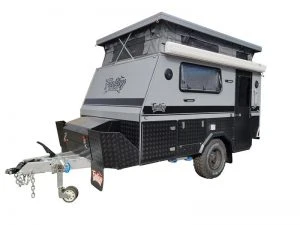
Pop Tops
Pop-tops are easy to tow. Small caravans like pop-ups are, generally, much lighter and easier to tow from A to B than larger types of caravans. You get much better fuel economy towing a pop-top because of the lower drag co-efficiency.
Pop-tops a doddle to store and manipulate by hand, particularly the smaller ones.
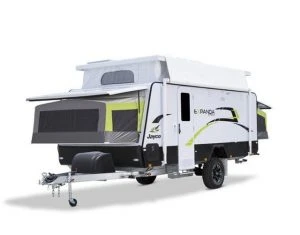
Expander
The merits of an expander caravan are similar to any standard or off-road caravan; however, they have the added bonus of a variety of pop-out areas that can be designed into the ceiling and walls. Essentially, pop these areas out at your destination, and you have a lot more interior space and utility at your disposal while being stationary. Just before you tow away, these areas are fold back into place, and away you tow again.

Off Road Caravan or Camper
The merits of having an off-road capable caravan or camper speak for themselves. They have been built tough and rugged so that you can tow them off-road. Obviously, you are going to need a bigger, torquier vehicle to tow this type of caravan/camper as they are heavier built and weigh more. Usually, these are towed by a decent 4×4 capable vehicle like a Land Rover, Toyota Land Cruiser, Ford Ranger, etc.

Camper Trailer
Similar to a pop-up caravan, except they fold out an array of attached tents. These are light and easy to tow. They can be designed for towing both on and off the road. They are cheaper to buy, as are pop tops.
Hydrogen V8 ICE

Exciting news for internal combustion engine (ICE) lovers: Toyota, Mazda, Subaru and Kawasaki are wanting to collaborate on the attempt to keep the combustion engine alive while meeting all the global clean air targets. Not only that, but Toyota and long-time Japanese engineering partner Yamaha are at work developing a special new hydrogen-powered 5.0-litre V8 engine. Unlike a hydrogen fuel-cell car, which combines hydrogen and oxygen atoms to create electricity to drive a motor, this new hydrogen V8 internal combustion engine is a conventional piston-driven engine that has been tuned to burn hydrogen instead of petrol.
While this newly developed V8 engine isn’t completely new, the way it’s fuelled is. It’s a 5.0-litre naturally aspirated V8 that is based off the engine that has been used in the Lexus RC F coupe. Yamaha says that it produces around 335 kW of power at 6800 rpm and 540 Nm of torque at 3600 rpm. Having modified the injectors, the head, the intake manifolds and other engine components, this work has added up to make the engine environmentally friendly. The hydrogen-fed ICE has become less powerful than the petrol-fed V8 that the hydrogen engine is based on. In the Lexus RC F coupe, the petrol V8 puts out 472 kW and 536 Nm of torque, so while torque has increased a little, power has dropped considerably. That said, 331 kW is still a stonking amount of power to enjoy, and more often than not it is the torque that you really want in the real world conditions. You also still get the sound of a burbling V8, and what’s not to like about that!
Yamaha engineer, Takeshi Yamada, said that the engine has a different character to a conventional petrol motor. He stated that hydrogen engines provide a friendlier feel, making them easier to use even without having utilize other electronic aids for the drive.
Toyota is clearly committed to the project of providing ICE powerplants that use hydrogen as the fuel. Given that Toyota has run a hydrogen-powered Toyota Corolla in Japan’s Super Taikyu race series as well as showcasing a hydrogen-powered Toyota Yaris GR prototype with the same hydrogen engine technology, it is obvious that they want to continue with this new breed of ICE.
One of the beauties about burning hydrogen instead of petrol is that the hydrogen powerplant does not produce carbon dioxide, which is considered to be one of the primary contributors to global warming. There would also be no significant nitrogen oxides emissions from an ICE designed to burn hydrogen, thanks to the selective catalytic reduction technology used in the aftertreatment of the combustion gases.
“Hydrogen engines house the potential to be carbon-neutral while keeping our passion for the internal combustion engine alive at the same time,” Yamaha Motor president Yoshihiro Hidaka said. He also added that: “I started to see that engines using only hydrogen for fuel actually had very fun, easy-to-use performance characteristics”.
While hydrogen is plentiful in the universe, it must be separated from other compounds to be used as fuel. Up to the year 2020, most hydrogen was produced from fossil fuels, resulting in CO2 emissions. Hydrogen obtained from fossil fuels is often referred to as grey hydrogen, when emissions are released into the atmosphere. Blue hydrogen is the hydrogen produced from fossil fuels when emissions are captured through carbon capture and storage (CCS).
Hydrogen that is produced from fossil fuels using the newer non-polluting technology called methane pyrolysis is often called turquoise hydrogen.
You can also generate hydrogen from renewable energy sources, and this hydrogen is often referred to as green hydrogen. There are two practical ways of producing green hydrogen. One of the ways is to use electric power for producing hydrogen from the electrolysis of water. The other way of producing green hydrogen is to use landfill gas to produce the green hydrogen in a steam reformer. Hydrogen fuel, when it is produced by using renewable sources of energy like wind or solar power, is a renewable fuel.
Hydrogen can also be created from another renewable energy source called nuclear energy via electrolysis, and this is sometimes seen as a subset of green hydrogen, but it can also be referred to as being pink hydrogen.
Obviously, when a car can be designed to run on hydrogen that has been produced from renewable energy sources, then this is a good thing. Toyota and Yamaha remain adamant that this is great technology which could carve out a niche for itself in the new EV automotive landscape.
Toyota has also recently revealed a fleet of 12 zero tailpipe-emission concept vehicles, many of which will reach production in the coming years.
This is all good news stuff, especially for those of us who love the sound of an ICE instead of a silent EV. The noisy farts always get the best round of laughter!
Motorcycles

There are those of us who just don’t do motorcycles. The thought of hurtling along the motorway with a massive engine between your legs sounds downright alarming to many people, and I get that. Considering that a motorcyclist does have less protection than most road users does put a lot of people off riding a motorcycle. However, a careful and skilful rider can manage the risks and keep well out of harm’s way.
Maybe you already ride a motorbike. You might even be wondering about getting your motorcycle license. If you haven’t experienced riding a motorcycle, then the chances are you’ll enjoy the thrill of riding a motorbike safely. Safely being the important word. Once you’ve mastered the skill of riding a motorbike safely, travelling about Australia on two wheels instead of four can be a fun and exciting experience you’ll enjoy for years to come. Out in the open, taking in the sights and smells, experiencing the elements, being one with the machine as you lean through the corners and feel the response are all reasons why many people love riding motorcycles.
As a tool to combat rising fuel prices, the motorbike could be a useful option. Whether you’re single or married, the motorbike can combine with your other means of transportation to get you where you need to go. They use a lot less fuel than a car and have the size (or lack of size) that enables them to slip through congested areas and park in tight spaces. If emissions are an issue for you, then the motorbike generates less of an environmental impact than a car does.
Even with the recent global health concerns and restrictions on our daily lives, over the last couple of years the motorcycle has enjoyed an increase in sales throughout Australia. Over the 2020 period, new motorcycle and scooter sales in Australia were up 6.2% from the previous year, showing a strong demand for individual mobility transport options, of which the motorcycle is the best. And throughout 2021, the growth trend mushroomed with an increase of 16.6%. That equated to a total of 102 new units sold, the highest level for 15 years.
Honda, Yamaha, and Kawasaki claim the biggest chunks of the market share, while Suzuki, KTM, BMW, and Harley Davidson deliver strong motorbike sales. All motorcycle manufacturers have enjoyed the stronger consumer demand for motorbikes, resulting in better sales figures.
Many people find motorcycle riding a relatively easy task but riding out on the road still comes with a fair share of risk. Lack of experience and recklessness are often key areas associated with motorcycle accidents. Damp and slippery roads need to be recognized and ridden over with care.
Allowing plenty of space between you and other road users is a must, and as you ride be aware of other people’s actions, intersection dynamics, any oncoming cars, and any car (whether moving or stationary) in front of you as you ride. If you are reading the other road users well, reading the road conditions right, and keeping your distance, then motorcycling is relatively safe.
There are plenty of nice sport bikes out there like the Buell Hammerhead, Ducati V4 or the Yamaha YZF-R7. These are great bikes for a fast ride over a short distance. They can make useful commute bikes as well.
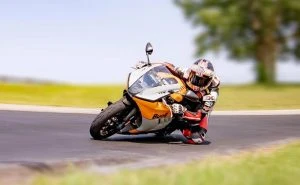
Buell Sportbike
The touring bikes and dual purpose-bikes are better set up for a comfortable seat and long distance ergonomics. These are swift bikes and can handle two-up and luggage no problems. They also make a decent commuter. Bikes like the Triumph Tiger 1200, MV Augusta Turismo, KTM 1290, Kawasaki Versys, Honda CB500X and BMW 1600 GT are great options in this class of bike. They are a heavy bike, so not ideal for learners and the inexperienced.
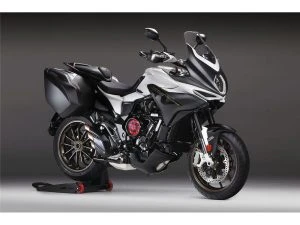
MV Augusta Turismo
Scooters and smaller bikes like the Honda Navi, BMW CE O4 Electric Scooter, and Honda CB300 are handy inner-city commuters and great or a learner rider.

BMW Electric Scooter
A Roadster like the Harley Davidson Street Glide ST, Harley Davidson Forty-Eight, Indian Chief, and Triumph Bonneville Bobber are all about the wow factor and looks. These are sexy bikes, but some people also find their relatively relaxed riding position, which includes arms and legs pointing forwards, nice for cruising on longer rides.
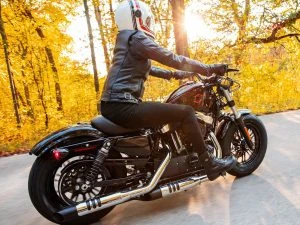
Harley Davidson Forty-Eight